Indoor Plant Soil Getting Hard? Try This!
Despite using suitable potting soil for your houseplants, they get hard after one point in time. Healthy potting soil needs to remain moist and well-aerated. However, the houseplant experiences a lack of water and nutrient absorption when the soil gets hard. This makes the plant weak and tired. But why does your indoor plant soil get hard? How can we fix the same?
Underwatering, excessive heat, and using old soil often lead to compacted soil. Plants’ roots also compact the soil around their roots as they grow and repeatedly absorb the water and nutrients. Frequent watering and manually aerating the soil can prevent the soil’s hardening.
Your duty does not end in just providing the plant with its requirements. You must also check whether your plant responds well after receiving the necessities. If you wish to know the reason behind hard potting soil, keep reading this article. We will also cover information about different ways to aerate and loosen the soil and prevent compaction.
Please note: Simplify Plants is reader-supported. Some links in the post are affiliate links and I get a commission from purchases made through links in the post.
Understanding Soil Hardening
If you are an indoor plant gardener, you would know how to keep your plant alive.
However, even with proper care and maintenance, you will face a common yet frustrating issue: Soil Hardening.
Hard soil is compact and tight soil where the air pockets of the soil get blocked.
The soil particles are so tightly sealed that the roots find it difficult to breathe, grow, and achieve the nutrients and moisture you provide.
With such hard soil, the plant will suffocate, slow down the growth, and begin root rot.
My first experience with hard soil was several years back when I was a novice gardener.
I was growing a few Pothos and Philodendrons.
The soil started hardening as weeks passed, and the plants weren’t thriving.
I watered enough, but that didn’t work.
That’s when I started researching about this.
Fortunately, I found several solutions.
I also found some preventive measures to keep the soil from hardening in the future.
Keep reading as I explore the reasons for hardening, associated risks, solutions, and prevention.

11 Reasons My Indoor Plant Soil Is Getting Hard
The potting soil of the houseplant gets hard because it does not get enough moisture for a prolonged period.
There are many other reasons for the hard soil:
- Underwatering
- Overwatering and improper drainage
- Lack of organic matter
- Excessive heat
- Clay soil
- Old soil
- Buildup of salt
- The wrong type of soil
- Aerating materials in the soil died or got flushed off
- Low humidity
- Loose soil
Now let us see how they are the causes of hard potting soil.
1. How Underwatering Leads to Hardened Indoor Plant Soil
Underwatering is the most common reason for hard indoor plant soil.
Without enough water, your soil will not remain moist and get dry and compact.
Most potting soil contains peat moss, which helps absorb moisture and release it slowly to all the roots and the plant.
But if the soil recipe containing peat moss is kept dry for a prolonged period, it will no longer accept the water.
The soil will not absorb any water even if you overwater it.
The best is to correct the watering routine.
Water the plant once a week at least.
Even if your houseplant is exposed to direct sun, watering once a week will at least keep it from being dry for an extended period.
If you are out of time to perform a regular watering routine, use self-watering pots for your houseplants, or consider a drip irrigation method with a timer.
2. Overwatering and Improper Drainage Leads To Soil Compaction
Hard and compact soil also results from overwatering and improper drainage.
Typically, over the years, the aerated materials can wash out.
But too much watering washes out the materials faster than usual.
Excess watering can lead to anaerobic soil conditions by displacing air pockets.
The same happens when the soil’s poor drainage causes prolonged retention.
Excessive stagnant water fills the soil’s air spaces and pushes out the moisture.
The soil should have a proper balance of water and air to stay well-aerated.
With overwatering and poor drainage, the soil particles get pressed too much, disrupting the natural soil structure.
3. Lack of Organic Matter Leads To Soil Hardening
Organic matter improves the soil quality and structure by creating a good balance between retention and drainage.
Organic matter binds the soil particles, allowing proper air and water movement.
Without this, the soil will become prone to hardening.
Organic matter can hold moisture besides draining it.
If the soil fails to hold enough moisture, it will become compact over time.
Organic matter can improve the soil’s water infiltration and reduce the susceptibility to compaction and erosion.
4. The Effects of Excessive Heat on Indoor Plant Soil Consistency
If your houseplants need indirect light, but you have kept them in direct sun for a long time, it will result in hard soil.
It happens mainly during the harsh summers when the intensity of the sunrays is at its apex.
The soil tends to get dry very quickly despite regular watering.
It is more problematic if your soil has high clay content.
This happens when you use garden soil for your houseplant’s potting mix.
Clay can make the soil more compact under excess heat.
The first thing to do is relocate the plant according to its requirements.
Some plants do not like heat. But if your plant needs direct sun, water your plant more frequently during the summers.
Add a layer of mulch to the top layer of the potting mix.
It will help in retaining moisture for a long time. Mulching also helps in maintaining the proper temperature of the soil.
5. Challenges of Using Clay Soil for Indoor Plants
It is always recommended that you avoid clay soil.
Clay soil is not only responsible for overwatering and poor drainage but other things too.
Clay can make the potting soil compact.
They take too much time to dry.
Besides, if you avoid watering for a long time, the clay will become dry and hard, blocking all the air pockets in the soil.
The moisture will run out from the sides in the next watering instead of penetrating the soil.
This happens when you use garden soil for your potting soil.
Sometimes, garden soil has a high clay content.
It is better to avoid garden soil for indoor potted plants.
Instead, buy potting mixes designed for houseplants.
They do not contain clay but materials that provide good texture and moisture absorption.
6. The Impact of Old Soil on Indoor Plant Health
Over time, the soil starts becoming hard.
It is crucial to change the soil once every 1-2 years. If your potting soil has no mold or pests, it doesn’t mean the soil will last forever.
It is better to change the soil of your indoor plant in time.
In general, you should change the soil once every 2-3 years.
However, it differs depending on the plant type.
It is okay to change the soil every year for fast-growing plants.
Sometimes, fast-growing plants might need repotting every nine months.
But for slow-growing plants, changing the soil every year is not mandatory.
You can wait. Some succulents, like cacti, need repotting every 3 to 4 years.
The soil will harden if you have bought a lot of potting soil for your houseplants and kept some aside for future use.
It is better to buy only the required amount of soil.
7. Dealing with the Buildup of Salt in Indoor Plant Soil
This happens when you over-fertilize your plants or use poor-quality water to water the indoor plants.
Fertilizers contain a lot of salts. After the plants absorb the required nutrients, the leftovers remain on the surface.
On the other hand, tap water contains many hard minerals like chlorine, fluorine, and chloramines.
These get collected on the soil over time.
These accumulated salts and hard minerals from fertilizers and water gather on the soil surface, block all the soil’s air pockets, and make the soil hard.
You may see a white layer on the soil surface.
As a result, the plant fails to get water and nutrients from the soil.
The best thing to do is fertilize less, especially if you are a beginner.
Using fewer amounts will never harm your plants.
Use distilled or filtered water to water your indoor plants.
You can use filtered tap water.
Or, let the tap water sit overnight for the minerals to evaporate.
After that, you can use this water. Rainwater is also a good choice for indoor plants.
Consider leaching the soil 2-3 times once a month.
Salts will also come out of the drainage holes along with the excess water.
8. Consequences of Using the Wrong Type of Soil for Indoor Plants
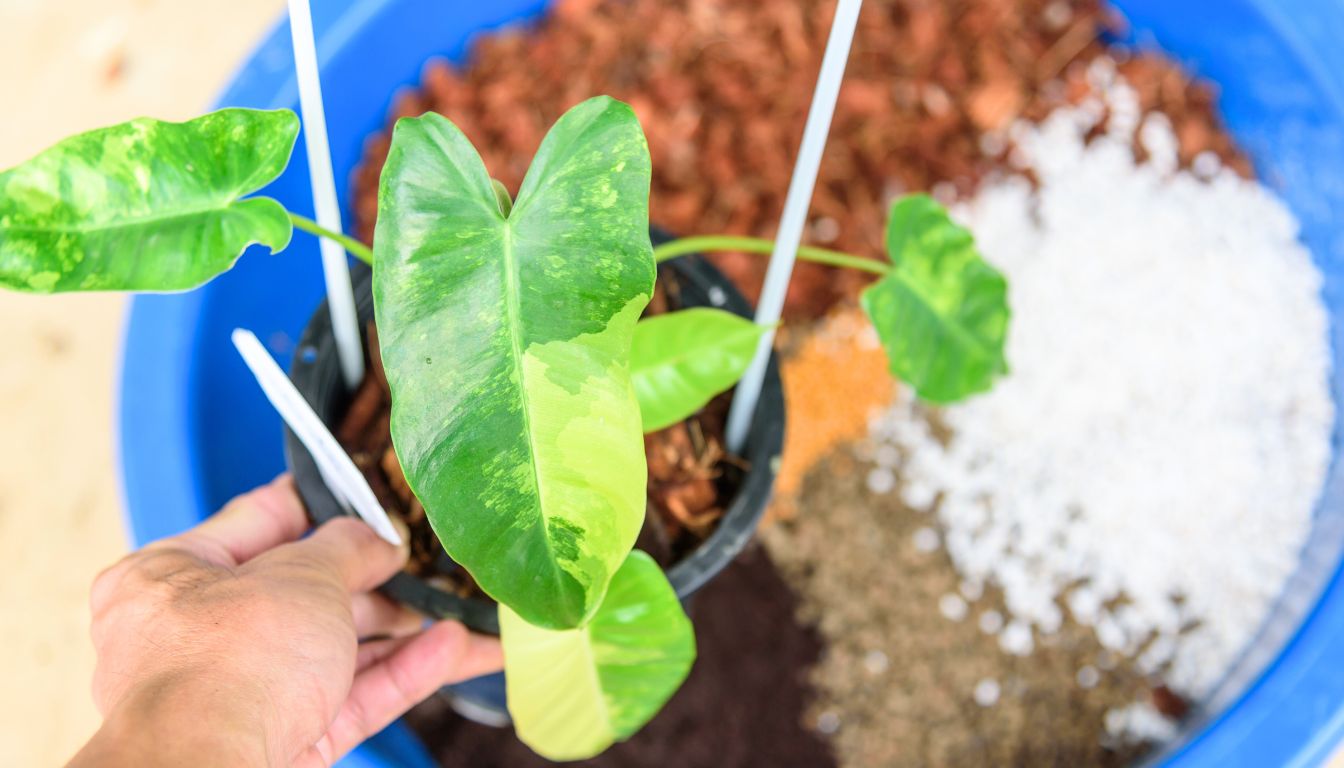
The soil will get hard when you use the wrong soil type, topsoil, or garden soil.
Topsoil is used mainly for outdoor plants.
It has a different texture that will not match the needs of indoor plants.
It has a different nutrient mixture unsuitable for houseplants.
The soil for the indoor plants should be able to stay aerated and not compact. Topsoil is entirely different.
Garden soil contains a lot of clay, silt, or sand.
Moreover, they lack the nutrients needed by the houseplants.
I have already discussed earlier that clay soil plays a significant role in compacting soil.
Both topsoil and garden soil are heavy-weight soil compared to houseplants.
It is better to avoid such soil types for indoor plants as they need lightweight soil and different nutrients than outdoor plants.
9. When Aerating Materials in Soil Depletes or Washes Away
We use peat moss, coco coir, perlite, vermiculite, and many other components while making a potting mix for indoor plants.
These ingredients are responsible for making the soil well-aerated, improving both water drainage and moisture retention.
Peat moss will remain active for 1-2 years and then die.
So the soil won’t absorb any moisture.
Vermiculite and coconut coir will get washed away and flush out from the drainage holes with each watering.
When these ingredients die and wash away, the aeration decreases.
As a result, the soil becomes hard over time.
This is the reason it is crucial to replace the old soil with new, fresh soil.
10. Low Humidity and Its Effect on Soil Hardness
Another cause of hard soil is low humid conditions.
Inside the house, the humidity is relatively less than outdoors.
Most houseplants originate from tropical regions and need high humidity.
Low humidity will result in the water being sucked out by the surrounding environment.
The more dry the air is, the more moisture gets sucked out from the plant and the soil.
As a result, the soil will turn hard and dry.
This mostly happens when the houseplants are kept in AC rooms.
Install humidifiers in your room if there are a lot of tropical plants.
It mimics the exact humidity of their native land.
Keep them away from ACs and heat generators.
Try regular misting or keeping the potted plants in terrarium jars.
11. Issues with Loose Soil in Indoor Plant Pots
Though loose soil is suitable for flexible root growth, it will result in dry soil.
Loose soil helps the roots to grow freely with enough space.
But it won’t hold enough moisture, and water will not reach the plant roots.
It will simply come out of the drainage holes.
The plant will soon start showing signs of under-watering.
And then, if you start repeated watering, the soil will clump and become hard in different places.
Effects Of Hard Soil On Indoor Plants

When the soil of the indoor plants gets hard and compact, it negatively affects the plants.
Some adverse effects will even result in the death of the plant. Let us learn the risks to avoid not making the soil hard.
Lack of water flow
Water moves freely from the top to the roots in well-aerated soil.
If the soil is too hard, water will not enter the soil and reach the roots.
They will stay still on the surface of the soil. As time passes, the water will start evaporating into the air.
Overwatering
When your soil becomes stiff, it rejects all the water you provide.
The water doesn’t reach the roots.
It remains on the soil and evaporates.
In this case, you might think watering more will solve the problem. But that is not the case.
When you water too much, it will result in soggy soil.
The small amounts of air pockets left open will get closed by this excessive watering.
They fail to receive oxygen. It seems like the plant is standing in a pool.
If, by any chance, all this excess water reaches the roots, the plant will face another problem named root rot.
Due to the compact soil, this water will not go out of the drainage holes and thus remains stuck in the soil, causing root rot.
Limited nutrients
The plants not only fail to absorb water in compact soil, but they also fail to get the nutrients.
The plant limits nutrient absorption if the soil becomes hard to a great extent.
It is essential to understand the condition of the soil before fertilizing.
If you fertilize your plant, the fertilizer will accumulate due to hard soil, and the plant cannot absorb the nutrients.
This will further result in over-fertilization and salt buildup.
Plants need a good amount of nutrients to remain healthy.
Due to hard soil, limiting nutrient absorption will result in a weak plant with yellow leaves, a spindly appearance, chlorosis, and no blooming.
Decreased aeration
Hard soil does not get enough oxygen to remain healthy.
Compact soil blocks all the air pockets in the soil.
However, the plants photosynthesize to produce oxygen, but that is not all.
When houseplants conduct respiration, they take sugar from photosynthesis and join it with oxygen.
But respiration will not happen with only sugar.
The plants need oxygen, too. If the air pockets get blocked, there won’t be any oxygen.
Ultimately, the plant will not have the energy for good growth.
Reduced root growth
When the soil is well-aerated, the roots get enough space to grow conveniently.
But when the soil is compact, the roots cannot spread and grow flexibly.
However, the roots may continue their growth despite the blockages of compact soil.
Eventually, the roots will constantly grow out of the potholes, out of the soil surface, circling until it becomes root-bound.
Some plants will like being root-bound to encourage flowering.
Still, in extreme root-bound conditions, if no action is taken, it can also result in the plant’s death.
Reviving Hard Soil For Indoor Plants
There are several ways of loosening and improving soil aeration.
Different methods depend on whether your soil is stored in a bag for future use or used as the existing potting soil.
For potting soil stored in a bag for future use:
- Pour some water into the bag and leave it under the sun for a whole day. This will loosen the soil and keep it moist.
- Another way of loosening the soil is using soap water. Soak a bar soap in a five-gallon bucket of water. When you find the first suds, take out the soap. Add this water to wet the stored soil and leave it for a day. This will loosen the soil.
For potting soil already in use:
- Loosen the soil by poking a fork, stick, or chopstick. Be gentle and careful while doing it. Try avoiding harming the roots.
- Now water your plant well, especially on the poked areas, so that the water can moisten the soil and then flow out of the drainage holes. If water doesn’t flow out of the holes, poke the soil again. It will help to aerate the soil and allow enough oxygen flow.
- If the pot is small, lift it and keep it in a water-filled tub. Keep it like that for not more than an hour. After that, take it out and keep it in a container filled with water for another hour. This method will help loosen the soil, and the soil will also absorb moisture in the second hour. Drainage holes are essential.
- If your pot is big enough, leave a garden hose with dripping water over the soil’s surface. The dripping water will get absorbed by the soil as time goes and the soil will regain its moisture.
- If you have not repotted your plant for quite a long time, it is time to replace the old soil. For making a new soil mix, mix 1 part of potting soil with 1 part of vermiculite or perlite and 1 part of sphagnum moss. Water the soil to make it moist, not soggy. This will help in good aeration, drainage, and moisture retention.
Using vermicompost to aerate the soil
Vermicompost is an excellent ingredient for keeping the potting soil loose and aerated. It consists of earthworms that constantly crawl in the soil and keep the soil light, loose, and well-aerated.
For making vermicompost:
- Collect vegetable and fruit scraps and peels. This will help the worms to digest quickly. Avoid using dairy, oils, meats, and citrus fruits.
- Put them in a container measuring 24” by 18” by 8” and between 5-10 gallons. A shallow container is better than a deep one.
- Get live worms. You do not have to collect them. They can be bought from the market. Buy them and add them to the compost container. Now, close the container. It will take 3-5 months for the compost to become ready for use.
Adding aerating materials
If your indoor plants’ soil has lost the aerating materials, you can add and replenish the soil.
Use peat moss, vermiculite, and perlite in the soil.
If the plant is a succulent or a plant that loves dry conditions, you can even add coarse sand as an aerating material.
Apply the materials as if you are rejuvenating the top layer of the potting soil.
Remove some topsoil layers, add the aerating material, mix them well without hurting the roots, and water well.
Preventing Indoor Potted Soil From Hardening In The Future

Here are some basic ways to keep the soil healthy.
Relocate the plant
If excessive heat is the reason behind compact soil, try relocating the plant.
Most houseplants tolerate low to medium indirect light.
Keep your plant near the north or east-facing window.
If your plant is sitting near a south or west-facing window, keep it a few feet away from the window.
Pull down curtains or use Venetian blinds to create a filter for direct sun.
Mist regularly
Misting can help keep the soil from getting stiff and dry.
Misting will help conduct good humidity and help maintain soil moisture.
Except for misting, add humidifiers for good humidity levels.
Follow good watering techniques and check the moisture
Water your plant 1-2 times a week, depending on the soil moisture and the plant’s requirements.
Try to keep the soil moist instead of making it wet.
The best way is to check the moisture level using your finger or a soil moisture meter.
If you use the meter, dip the probe a few inches into the soil and look for the result on the tester screen.
If the result is dry, water the plant.
If you use your hand, insert the finger a few inches to see if the soil is moist or dry, and water accordingly.
Do not let the soil too dry.
Maintain soil Aeration and Rejuvenation.
Add sufficient aerating materials to your soil to prevent hard soil for the indoor plants.
Use ingredients like vermicompost, perlite, vermiculite, and peat moss in the soil.
Add them again when they die and wash away from the soil with regular watering.
Replenish the top few inches of the soil every 1-2 years.
Use a fork, chopstick, or stick to aerate the soil sometimes.
This will help the roots breathe, and water will penetrate and travel from the top to the roots.
Regular soil testing
Test your soil regularly by touching or poking it.
Poke the soil using a chopstick or finger and see whether it feels moist or hard.
Do not let the soil harden too much. Always try to keep it moist.
Repot the plant
Repotting will help improve the plant’s condition.
With fresh soil, the plant will no longer face any risk of compact soil.
Only keep these in mind:
- Spring is the right time to repot as it is the growing season; transplant shock can be handled and recovered quickly.
- Fast growers must be repotted once a year or sometimes every 9-10 months, whereas slow growers can wait for 3-4 years.
Final words
A good, well-aerated, lightweight soil is the key to the remarkable growth of indoor plants. A compact soil will affect the growth of the plants as it prevents the absorption of nutrients and water.
It is essential to use suitable potting soil, sometimes loosening and changing it whenever necessary.
This will help in good air circulation, easy absorption of water and nutrients, and receiving fresh nutrients along with fresh soil. Altogether, it will keep the plant healthy and thriving.
Will aerating damage the roots?
If aerated with a fork or stick, there are risks of root damage, as you are unaware of the exact location of the roots in the soil. While using forks or sticks, be very careful. Try sifting the soil slowly.
How often to loosen the soil?
There is no specific time to aerate. You can loosen the soil anytime. You need to keep the soil in check by poking your finger or a chopstick into it. If it feels hard, it has started compacting. Your focus should be to prevent compaction instead of treating it. It will help you keep away from the risks of compaction.
Ref: Soil compaction studies, Effect of Soil Compaction, Impact of Soil Compaction on Root System.
Recommended Garden Supplies
| Product Image | Our Recommended Gardening Supplies | Check Offers! |
|---|---|---|
Top Top
Top
Top
Top
Top
Top
Top
Top | rePotme Houseplant and Tropical Classic Potting Soil Mix | Check Offer On Amazon |
 Top
Top
Top
Top
Top
Top
Top
Top | Espoma Organic Indoor Plant Food | Check Offer On Amazon |
 Top
Top
Top
Top
Top
Top
Top
Top | GooingTop LED Grow Light 6000K Full Spectrum Clip Plant Growing Lamp | Check Offer On Amazon |
 Top
Top
Top
Top
Top
Top
Top
Top | Soil Moisture Meter | Check Offer On Amazon |
 Top
Top
Top
Top
Top
Top
Top
Top | Govee Hygrometer Thermometer, Bluetooth Enabled! | Check Offer On Amazon |
 Top
Top | LEVOIT Humidifiers for Large Room(Best For Plants) | Check Offer On Amazon |
 Top
Top
Top
Top
Top
Top
Top
Top | Upgraded DIY Automatic Drip Irrigation Kit, 15 Potted Houseplants Support | Check Offer On Amazon |
 Top
Top
Top
Top
Top
Top
Top
Top | Stainless Steel Heavy Duty Gardening Tool Set | Check Offer On Amazon |
 Top
Top
Top
Top
Top
Top
Top
Top | Bonide Insecticidal Soap | Check Offer On Amazon |
 Top
Top
Top
Top
Top
Top
Top
Top | Bonide 32 oz Spray Neem Oil for Organic Gardening | Check Offer On Amazon |
 Top
Top
Top
Top
Top
Top
Top
Top | Garden Safe Fungicide | Check Offer On Amazon |

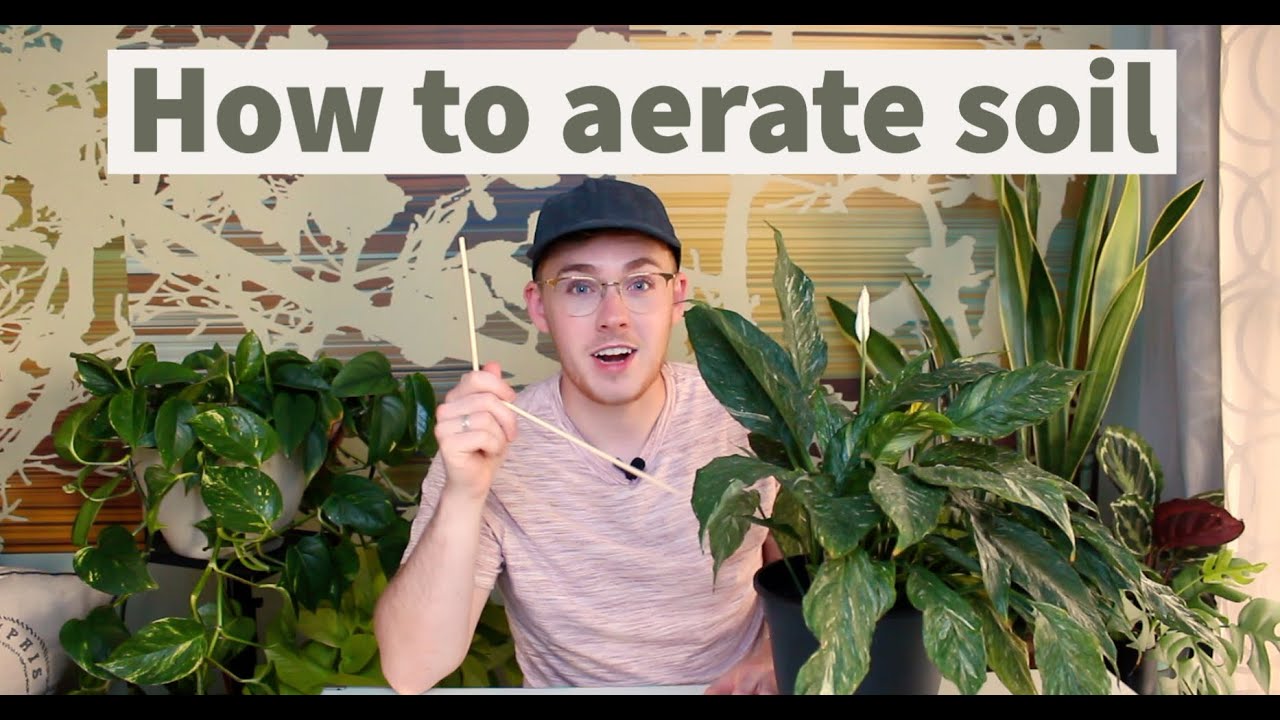
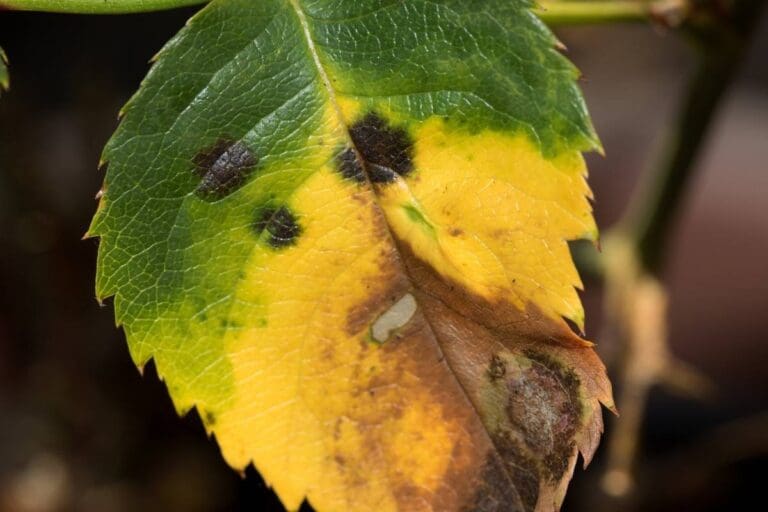

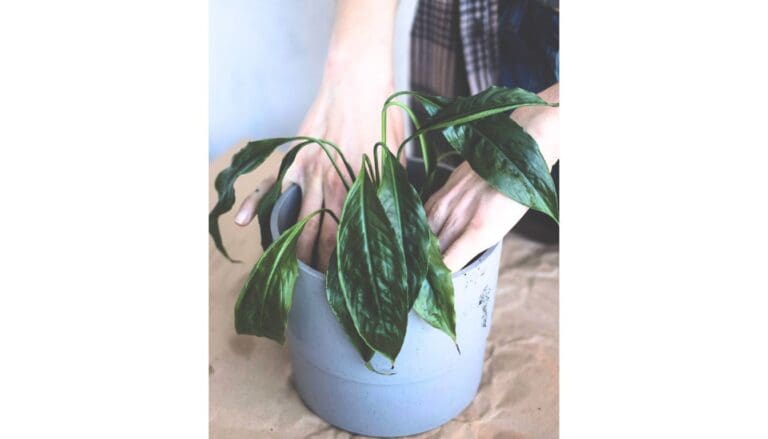

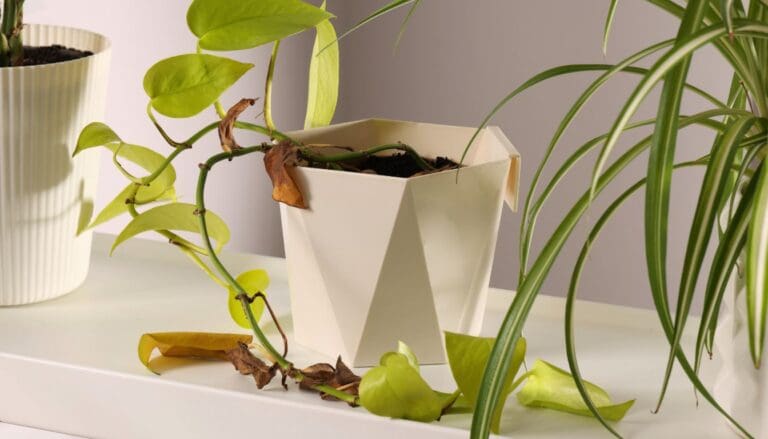

I had a strange experience with this recently.
My little Peperomia Obtusifolia Variegata, which had been growing very nicely, suddenly began dropping all new leaves and just stopped any new growth.
I wondered if it had root rot.
I decided to pull it from the pot and take a look.
I couldn’t believe how hard it was to get it out! The soil was like cement! I had to use a small garden tool to dig it out and do it gently, trying not to damage it.
When I got it out, there were almost no roots left but a very small root ball. No, they hadn’t been left in the soil, I think the soil was so hard, it wasn’t allowing for root growth.
I literally had to chip the soil out of the pot!
I cleaned up the remaining root ball (gently!) and repotted it with new soil, but a new brand mixed with a cactus mix. I find this is more aerated and loose.
I don’t know why this happened. I aerate my plants’ soil regularly (manually) and have the same soil (an old brand) in other pots, with no problems. I hope I’ve managed to save my Peperomia!
Hey Loretta,
It sounds like you took the right steps by repotting your Peperomia in a well-aerated mix. Soil compaction can definitely restrict root growth. Keep an eye on it, water sparingly, and ensure it gets bright, indirect light. With proper care, your Peperomia should recover and thrive.